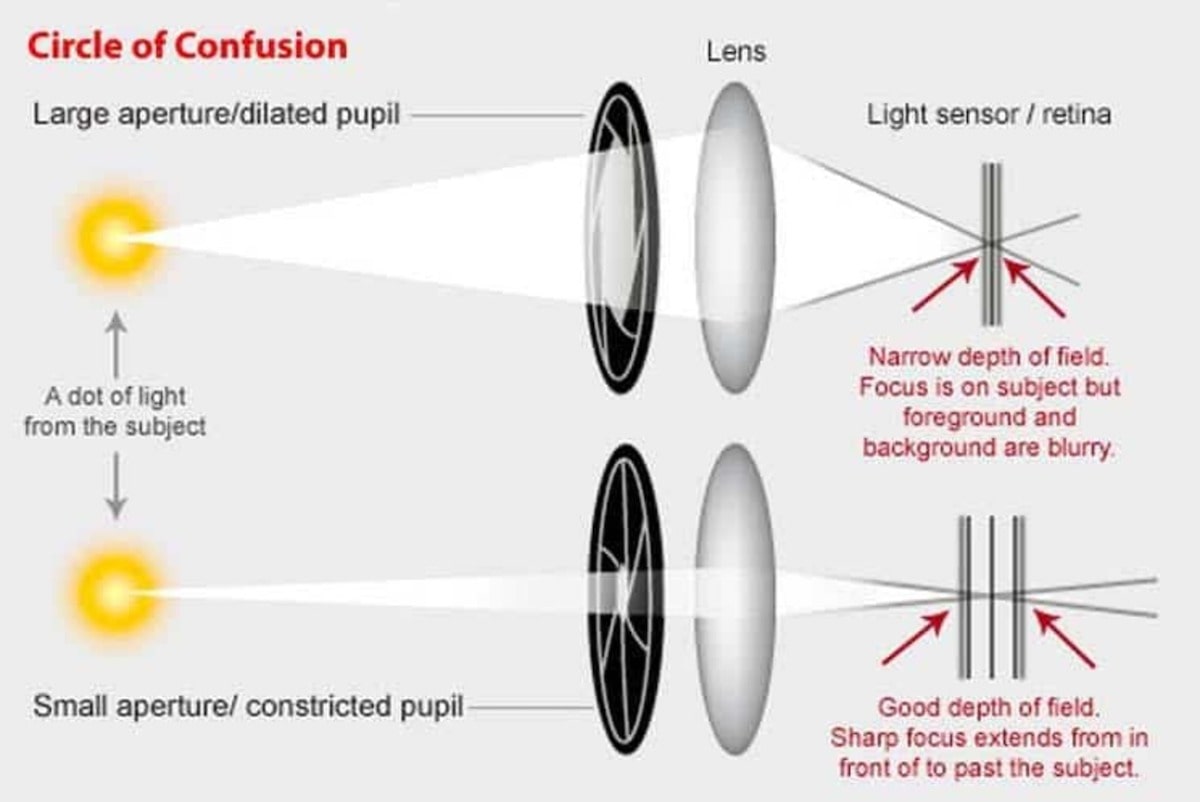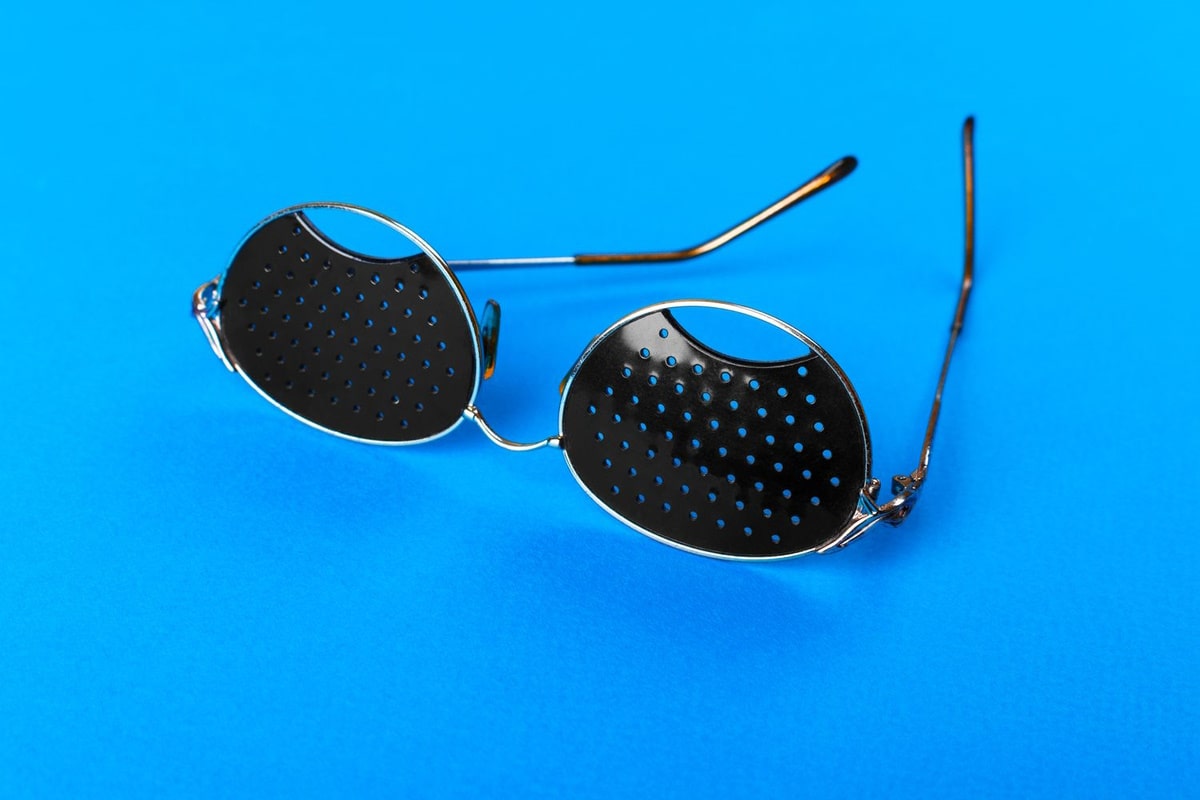What are Pinhole Glasses?
Pinhole glasses have become more popular lately. These interesting-looking eyewear aren’t just novelties but can help fix various vision problems. For example, many people choose to use them to address nearsightedness, farsightedness, and astigmatism.
While pinhole glasses may seem unusual, some people swear by their effectiveness.
So, what exactly are pinhole glasses, and how do they work? Let’s dive in and explore this vision aid!
Where in the world did pinhole glasses come from?
While pinhole glasses (AKA stenopeic glasses) may seem new and innovative, the concept has existed for centuries.
One of the first known use of pinhole technology dates back to ancient China, when a Chinese polymathic scientist and statesman, Shen Kuo, experimented with a pinpoint camera and burning mirror.
Pinhole technology is a development of the camera obscura concept, as it uses the same principle of light passing through a small aperture to create an image. The use of pinhole technology has expanded to other areas, such as vision correction, medical diagnosis, and scientific research.
Since then, the concept of pinhole glasses has been refined and developed by various individuals and companies worldwide. Today, pinhole glasses are widely available online and in some optical stores.
How pinhole glasses work
Pinhole glasses decrease the amount of light that enters the eye using a series of tiny holes. This technique only allows light to enter the eye through the holes rather than through the glasses’ lens. As a result, the pinholes create a more precise, sharper image for the wearer.
In terms of the effect on vision, pinhole glasses help reduce blurriness and improve overall visual acuity. They can also help reduce glare’s effects and improve contrast, which can be particularly beneficial for those with certain eye conditions.
Will pinhole glasses help improve my eyesight?
Pinhole glasses can help treat nearsightedness or astigmatism. However, this is truer clinically as eye doctors are the primary users.
Eye doctors often use pinhole glasses as a diagnostic tool to check for vision impairments. They can also use pinhole glasses with an occluder, an instrument used to cover one of your eyes while you read an eye chart. On one end, the occluder is solid; on the other, it has several tiny pinholes. A doctor uses this to gauge the potential of your vision.
We also use pinhole glasses to evaluate corneal distortion and cataracts. Eye doctors can use them to focus light into your eye and determine if it’s worth performing cataract surgery based on your vision capability behind the cataract.
If you’re struggling with presbyopia, a condition where short-range vision gradually worsens as you age, pinhole glasses might be worth a try. Some eye doctors have cautiously reported success with pinhole glasses, as they can improve short-range vision for brief periods but can also cause eye fatigue and slow reading speed.
So, while they may have potential as a presbyopia aid, it’s essential to consider their pros and cons carefully.
Pinhole glasses aren’t perfect
While people believe that pinhole glasses can solve specific problems, it’s important to note that they have some limitations and potential drawbacks. While we often see them sold as a remedy for myopia, astigmatism, and other eye conditions, this claim lacks evidence to support it.
The US Federal Trade Commission banned American companies from advertising pinhole glasses as a treatment for eye problems back in 1993.
Pinhole glasses may offer slight improvement and not completely replace traditional corrective lenses. Another potential limitation of pinhole glasses is that they can take some time to adjust. Because they restrict the amount of light entering the eye, they can feel quite different from traditional eyewear.
It’s also important to note that pinhole glasses may not be suitable for all eye conditions. While they can be effective for improving vision in some cases, they may not be appropriate for more severe eye conditions or injuries such as macular degeneration, glaucoma, or any other condition that affects the central part of the visual field.
Pinhole glasses may not be a practical solution for everyday use. These glasses work by blocking part of your direct vision and limiting peripheral vision, which reduces the amount of light entering your eye and lowers the visual quality of an image. As a result, the image may appear sharp, but it can seem dim, making activities like driving unsafe while wearing pinhole glasses.
Pinhole glasses vs. traditional prescription glasses and contact lenses
Pinhole glasses are different from traditional eyeglasses in that they improve vision by blocking some of the light that enters the eye through small holes rather than correcting refractive errors.
Traditional prescription glasses are a popular option for correcting your vision. Glasses can be made with different lenses to meet different vision needs, like single-vision, bifocal, and progressive lenses.
On the other hand, contact lenses are a more discreet and natural-looking alternative. They offer a wider field of vision and are not affected by weather conditions or physical activity. Contact lenses are also famous for those who want to maintain an active lifestyle or participate in sports.
Take pinhole glasses with a pinch of salt
By using a series of small holes to reduce the amount of light entering the eye, pinhole glasses can create a clearer and sharper image for the wearer.
Eye doctors primarily use pinhole glasses in a clinical setting to diagnose specific vision problems such as myopia or astigmatism. However, while some people believe it works, there is little evidence to support it.
It’s also important to note that using pinhole glasses regularly may not be practical, especially when driving. This shortcoming is because they block your peripheral vision.
As with any vision care option, it’s essential to consult a qualified eye care professional to determine if pinhole glasses fit your needs.

Written by:
Angie Garcia














